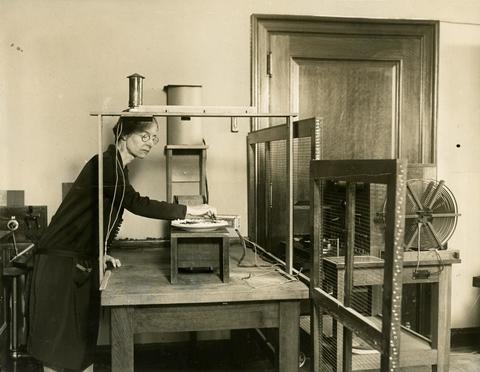When physicist Louise Sherwood McDowell arrived at NIST in 1918, the first female Ph.D. at the institute, some of her male colleagues—unaccustomed to being in the lab with a woman—worried that she would be offended by the sight of them working in their shirtsleeves. Contrary to their misplaced concerns, McDowell was not easily distracted. In fact, by the end of the year the quality of her work would be noticed and commented on by perhaps the most famous person of the era: inventor Thomas Edison.
McDowell earned her Ph.D. in physics from Cornell University in 1909, where her thesis work on the electrical properties of selenium was one of the earliest studies of semiconductors. She was hired as a professor of physics at Wellesley College, and later became the chair of the college’s physics department. After the U.S. entered WWI, the federal government found itself in need of scientists to aid in the war effort. With men off to war, the biases of the period prohibiting the hiring of women for certain positions faded in the light of pressing wartime needs. McDowell took the summer off from Wellesley to work at NIST, becoming the first woman employed in the rank of Scientist at the institute. While at NIST she investigated crystal detectors for use in Army Signal Corps radio equipment. By the end of her summer tenure, McDowell’s work was considered of such value that NIST sent an urgent request to Wellesley College asking that she be granted a leave of absence from the fall semester to continue her work. McDowell stayed at NIST until the end of 1918, helping to write a handbook for the Signal Corps on the Principles Underlying Radio Communication. A copy of this handbook ended up in the hands of inventor Thomas Edison. After reading the book, Edison wrote a letter to NIST Director Samuel Stratton in which he states that “This is the greatest book on this subject that I have ever read. And I want to congratulate you and your bureau on its production.” In the book several NIST scientists are listed as contributors, but sadly McDowell’s role goes unmentioned.
Louise McDowell returned to her teaching career at Wellesley after the war, staying at the college until her retirement in 1945. But the government would need her services once more. At the request of the U.S. Office of Scientific Research and Development, she postponed her retirement by one year to work on a secret WWII project at the Harvard Radio Research Laboratory, researching and producing radar countermeasures.
It’s likely McDowell’s decision to come to NIST during the war had more to do with patriotic duty than gender equality, but nonetheless her choice impacted the latter. As historian Rexmond C. Cochrane points out in his history of NIST, “From then on the doors [to employment as a scientist at NIST] were open and the question of [women’s] ability was never raised again.”

Professor Louise Sherwood McDowell in the Wellesley College Physics Laboratory, ca. 1909-20.

